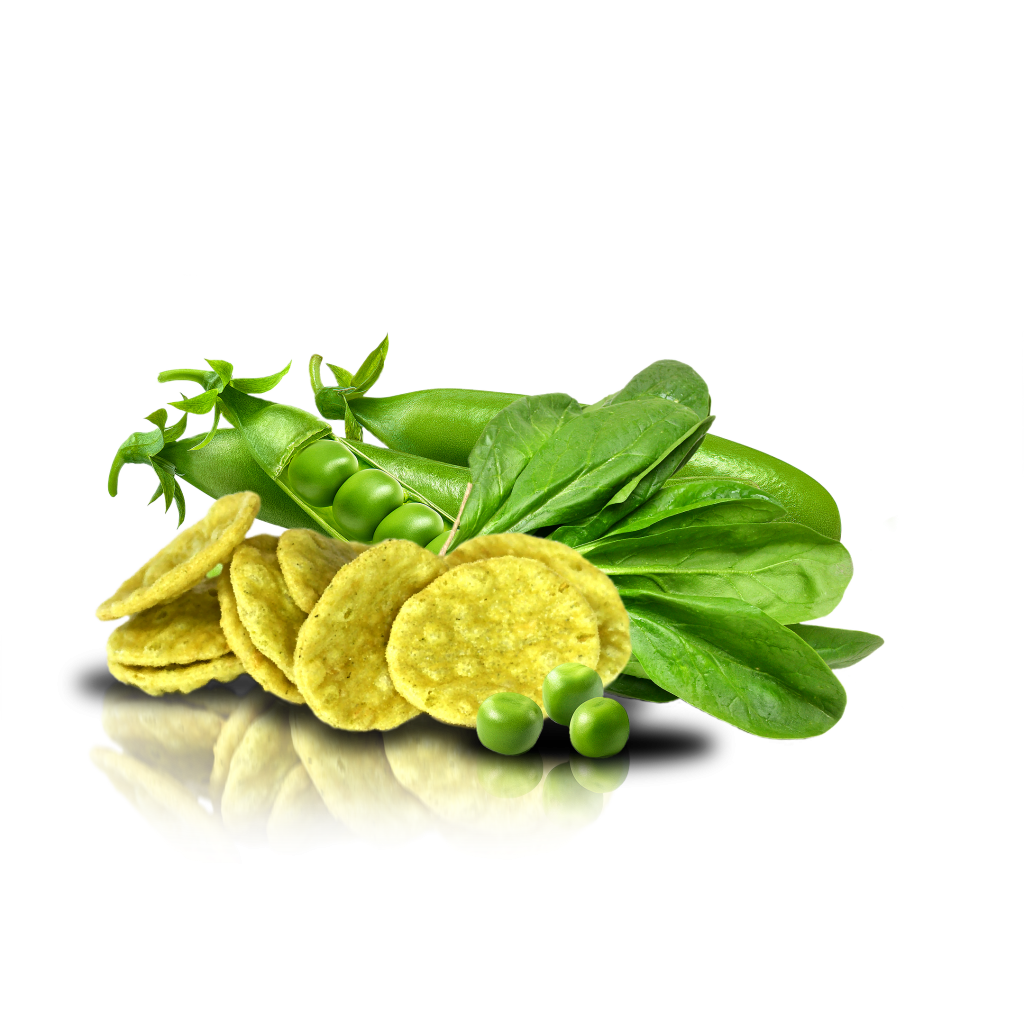8 February, 2021
Product Opportunities with RoastR!
The RoastR Team have been busy testing different snack pellets in Lab RoastR to learn more about the technology. What type of pellet and shape works best, and what settings are used to produce a great product? Read all about it in this article.
Comparing Vegetable Oil and Salt as Heating Media
The excellent heat transfer in salt was one of the reasons why we developed RoastR. However, when roasting snack pellets in salt, the contact of heat with each pellet is not completely covered. For instance, when frying a snack pellet in oil the coverage of heating media is complete on the product, which is very efficient. But we can transfer the same amount of heat to the pellets by just increasing the processing time a few seconds.
Another difference using salt as heating media, is the pick-up of heating media in the product. A fried snack pellet picks-up between 15-35 % of oil, fat, whereas the snack pellet processed in RoastR only picks-up a minimal amount of salt, 0,1-0,4%, which equals 0 % fat.
How Reliable is The Heat Transfer in Salt?
We have performed tests in our Lab RoastR with 14 kg of vacuum salt with following granulometry, and we have not noticed any fluctuations in the heating profile:
- > 0,71 mm (< 10 %)
- 0,10 – 0,71 (> 85 %)
- < 0,10 mm (<5 %)
This is a slightly larger granule size compared to the salt used for seasoning. It is important to use as dust free salt as possible. We have reached good results using vacuum salt and it has also proven to consistently transfer heat over time.
Ingredient Base and Pellet Shape Affects the Expansion
We have performed several tests with different pellets and ingredient bases, and we can see a clear correlation between expansion, ingredient base and pellet shape.
Potato-based pellets, with a simple and open core or with a small size, 15-30mm, has a great expansion at 185℃ in 25 +/- 5 seconds. We have also reached a good result with corn-based pellets, in terms of texture and expansion. However, for more complex 3D shapes they require both a higher processing temperature and time to reach desired expansion. How high the temperature and how long the time must be, is a matter of ingredient base and pellet shape. Based on our tests, simple 3D shapes with a corn-base requires a temperature of 195℃ and at least 30 seconds, whilst a complex corn-based 3D shape requires 205℃ and 25+ seconds.
When mixing the ingredient base with other ingredients than vegetables, the required setting varies a lot. However, we have found it possible to expand pellets with following ingredient bases:
- Shrimp (Score 5/5 in expansion).
- Pork Skin (Score 5/5 in expansion).
- Chicken skins (Score 3/5 in expansion).
- Seaweed (Score 3/5 in expansion).
Pellets with a High Vegetable Content
The initial tests with RoastR were done with snack pellets with a high content of fresh vegetables. Up until today we have used snack pellets with a fresh vegetable content ranging between 40-45 %. The processing in RoastR results in an ideal expansion of the pellet.
The taste of the processed vegetable pellet is truly authentic and by just adding a few percent of sunflower/rapeseed oil and salt, the flavor gets even better mediated.

Reasons for Not Achieving Desired Expansion
Did we manage to expand all pellets we processed in Lab RoastR? No, we did not, even if the pellet specification sometimes theoretically spoke for a good expansion.
We experienced non-successful tests with all ingredient bases, except for the fresh vegetable pellets, but we are very confident that an adjustment in the composition can result in desired expansion for those pellets. The biggest obstacle for reaching a good result with, are complex 3D shapes, since they will not allow salt to enter properly to transfer the necessary amount of heat. 3D shapes also bring along a risk of bringing salt out with the product.
Temperature and Time
In general, the required processing time can be lowered when using higher temperatures (from 195℃). As with other processing technologies, it is a balance to find the best temperature and time. Too long processing time is bad for your capacity, but too high temperature can risk product appearance and food safety. During the tests, we operated the Lab RoastR at temperatures from 175℃ to 205℃, with a processing time between 17-35 seconds.
Conclusion
The vegetable pellets reach the best result in RoastR. However, there are many products that also reaches a good result. The best expansion will be reached when using open and simple pellet shapes (2D), with a small size (15-30mm). Temperature and time must be decided by the pellet base and specific shape.



